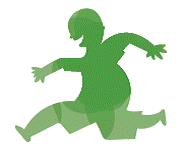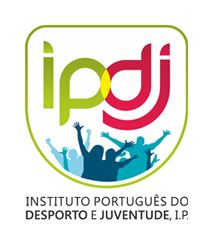About the project "Portuguese Kids Report Card"
Portugal is currently developing national recommendations and policies on health-related physical activity, but the systematic evaluation of the factors that affect physical activity behaviours in Portuguese youngsters is essential and can be useful for public health strategies targeting enhancing physical activity levels.

The Portuguese Report Card followed the inspiration and procedures used in the Active Healthy Kids Canada. Due to the need for nation-wide studies in children and adolescents, since available results are not consistent, and since a robust surveillance data for Portugal that would address these needs are still lacking..
These report cards seemed an exceptional opportunity for presenting the data in a format that can be used by researchers, policy makers, and practitioners.
The 9 quality indicators are organized into 2 categories
Overall Physical Activity and Health Behaviours and Outcomes
- Sedentary Behaviour
- Overall Physical Activity Levels
- Active Play and Leisure
- Active Transport
- Organised Sport Participation
Settings and Influences on Physical Activity and Health
- Family and Peers
- School
- Community and the Built Environment
- Policy
The Card grades
The card grades are based on an assessment of current Portuguese data for each indicator, judged against a benchmark (e.g. an evidence-based recommendation), and determined by the percentage of Portuguese children and adolescents meeting the benchmark.
Each grade assignment are described bellow:
- 80-100%: Portugal is succeding with a large majority of children and adolescents - A
- 60-79%: Portugal is succeding with well over half of children and adolescents - B
- 40-59%: Portugal is succeding with about half of children and adolescents - C
- 20-39%: Portugal is succeding with less than a half of children and adolescents - D
- 0-19%: Portugal is succeding with very few children and adolescents - E
Common to any report card are the grades. This Portuguese Report Card assigns grades to 9 quality indicators grouped into 2 categories (see below):
Overall Physical Activity and Health Behaviours and Outcomes
- Sedentary Behaviour - 20% of pupils aged 10 to 18 years old revealed to watch TV more than 4 hours per day during weekdays, and 47% during weekends (1) - D
- Overall Physical Activity Levels - Only 34% of boys and 17% of girls, aged 11-15 years, were sufficiently active (2). Only 36% of 10 to 11 years old, and 4% of 16 to 17 years old adolescents meet physical activity guidelines (3) - D
- Active Play and Leisure - 49% children and adolescent aged 12-18 years regularly participated in physical activities outside of school 14% engaged at least once per week (1) - D
- Active Transport- 45% were associated with active transport to and from school (4). Thus walking were identified as the main choice of transportation, 30% of children aged 7 to 8 years old commuted either by foot or cycling on a regular basis during school days (5) - c
- Organised Sport Participation - Participation in school sports reached 85%(1, 6) - B
Settings and Influences on Physical Activity and Health
- Family and Peers - Fathers and mothers have similar influence on children's PA levels, irrespective of their sex (7). Only 9% of adults engaged in vigorous-intensity physical activity on at least 4 days, and 14% of adults reported that they engaged in moderate-intensity on at least 4 days within the past 7 (8)- C
- School - PA is provided as physical education classes in almost all schools and academic grades providing participation in schools sport activities for all students (9) - B
- Community and the Built Environment - In Portuguese youngsters, perceptions of environment correlates are gender and behaviour (4) - D
- Policy- Despite the policies have not created all of the necessary conditions, they did establish an official position that recognizes PA as an important factor in public health and youth development (10, 11) - C
The process used to assign the grades for the health indicators involved
1. The “best available” evidence for each quality indicator.
2. In the first instance surveys that were representative of children in Portugal were selected. Where nationally representative data were not available the best available survey data was used.
3. For settings and influences, policy documents, strategy documents and other guidance that was publicly available was used to inform the expert group. This process involved a subjective analysis of selected documents between the years 2010 and 2016.
4. For each quality indicator, data were considered against a recommendation or benchmark.
5. The rationale for using the data source was given and likely biases in the data recorded.
6. Subsequently major gaps in the data were noted and considerations given to limitations in the “best available evidence.”
7. Recommendations on how to improve the grade or improve measurement were provided.
8. Every grade was achieved through a verification process involving presentation to the expert group by the assign members of every grade suggestion and then discussed according to survey methodology and data quality.
Links
Downloads
 Kids Cards - Short version (EN)
Kids Cards - Short version (EN)






